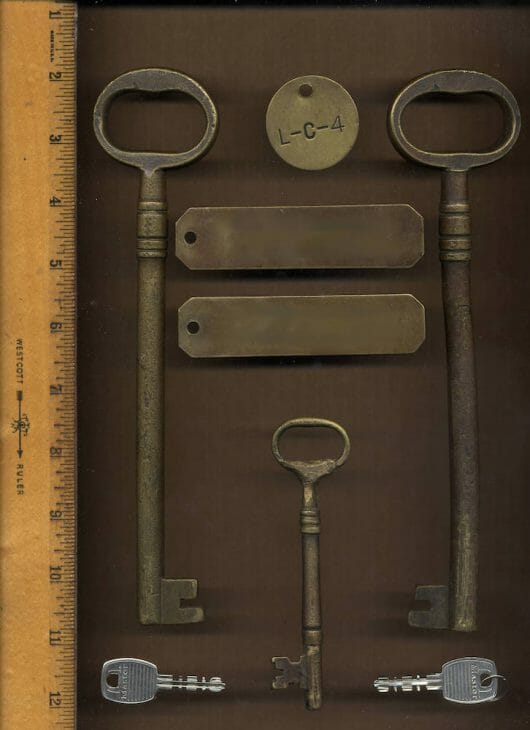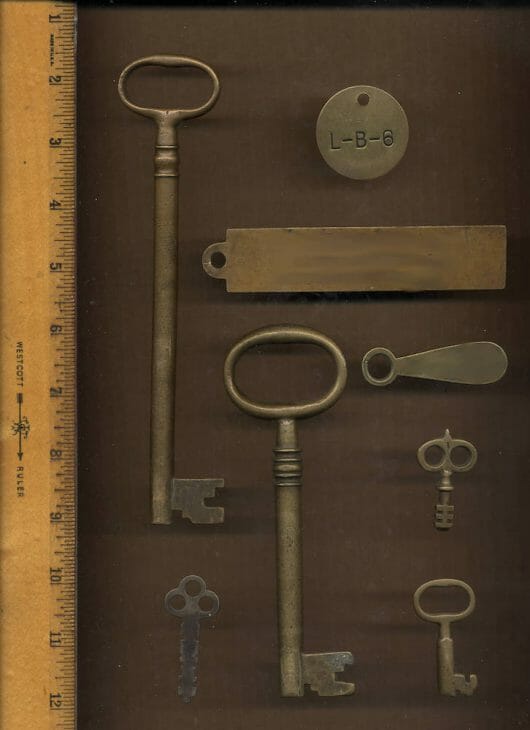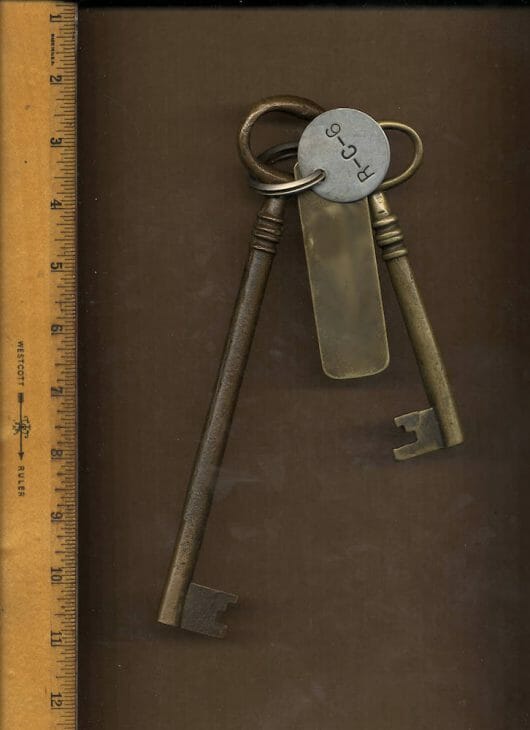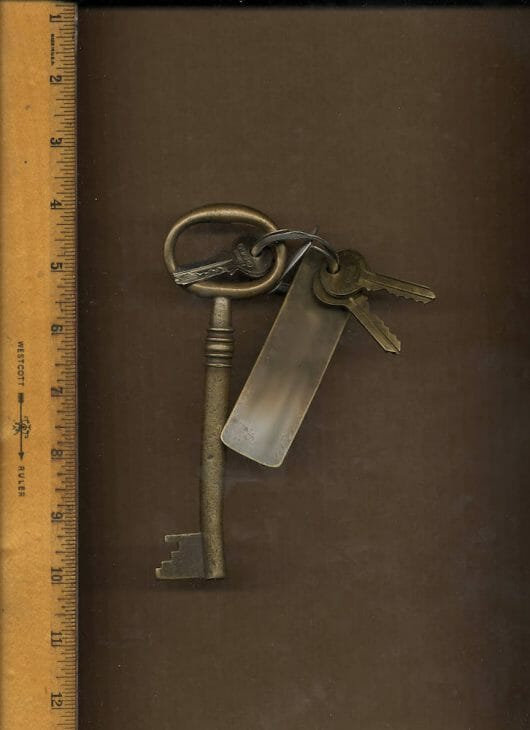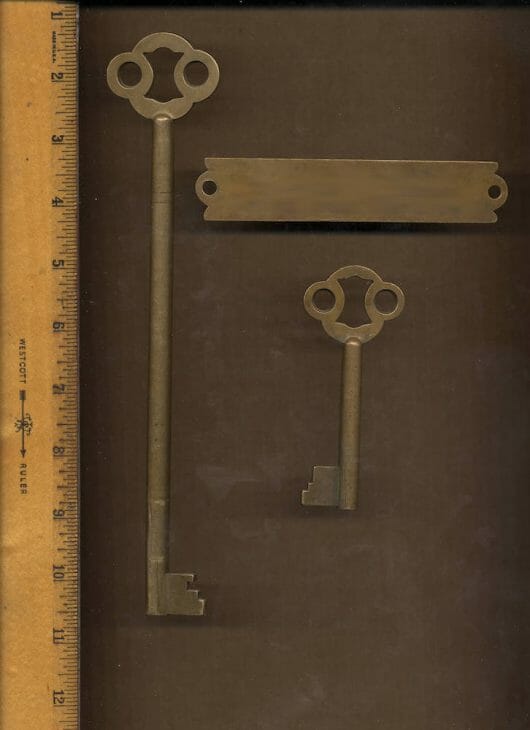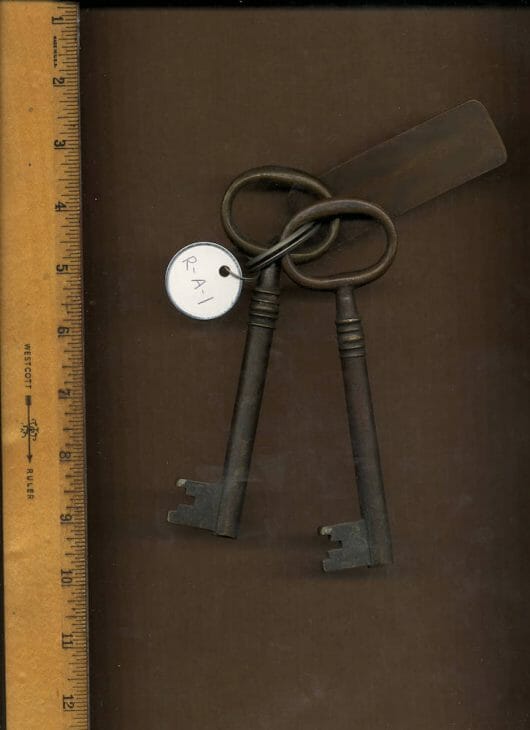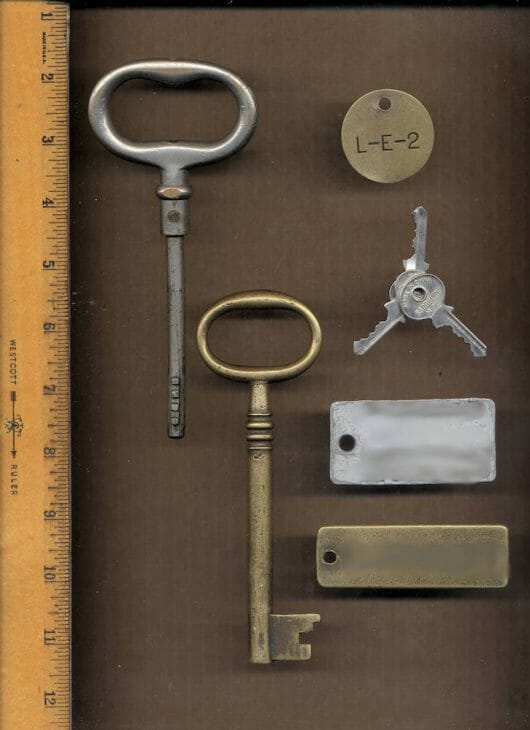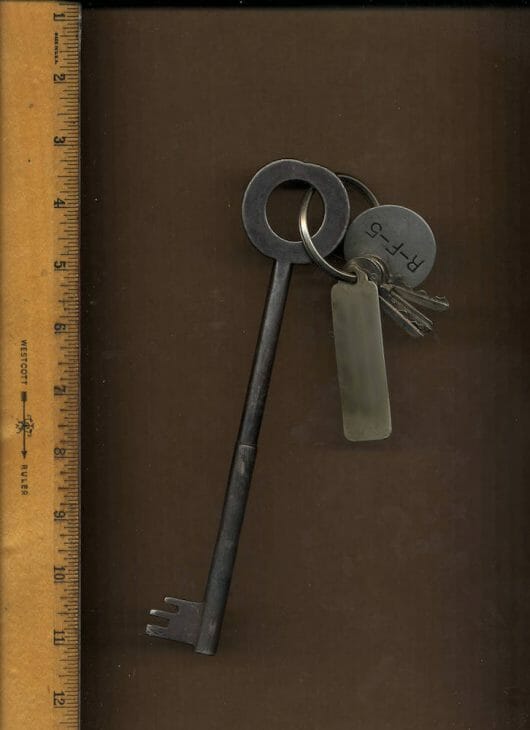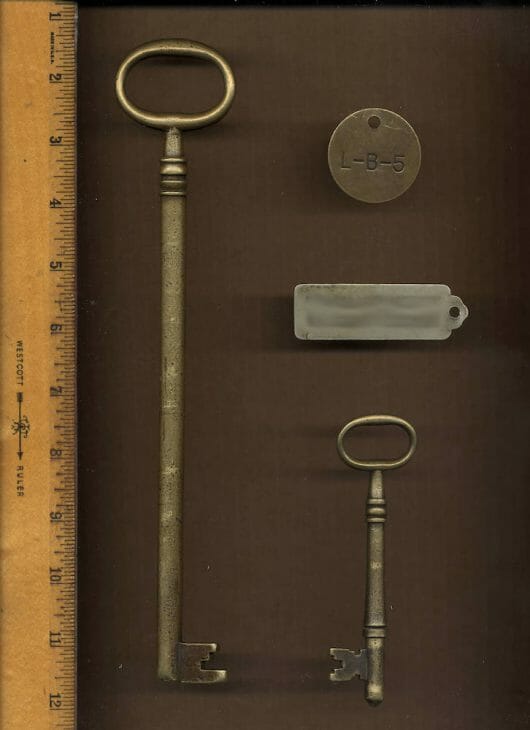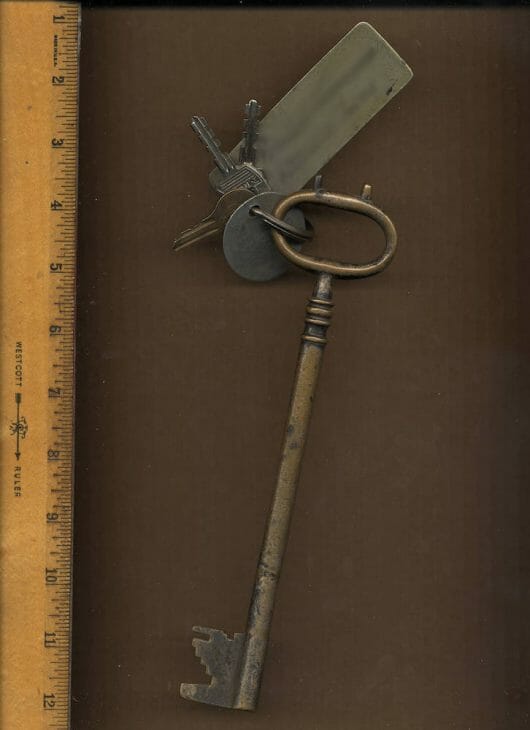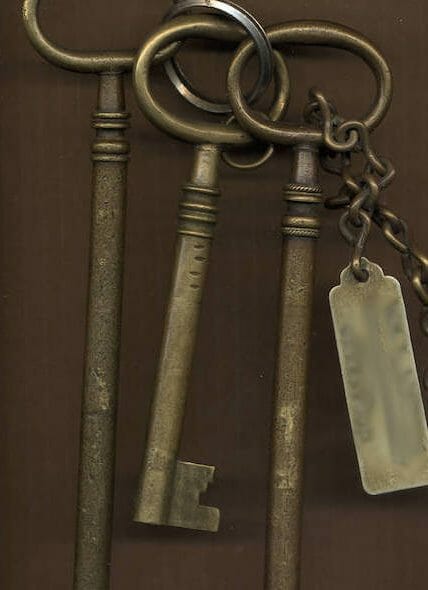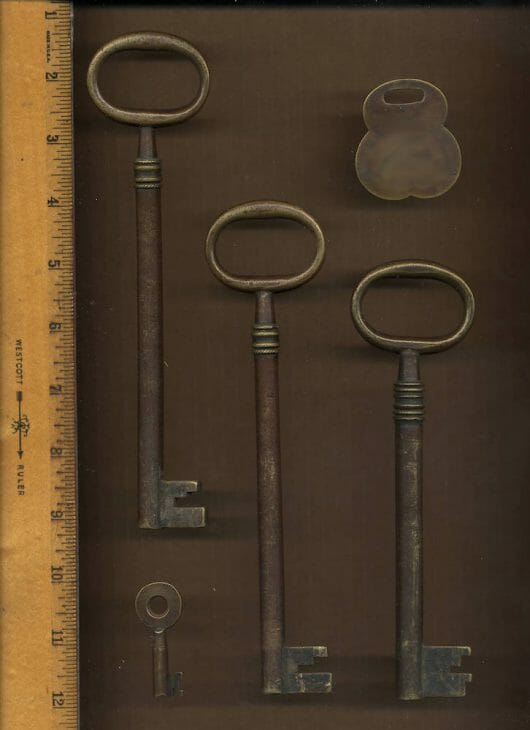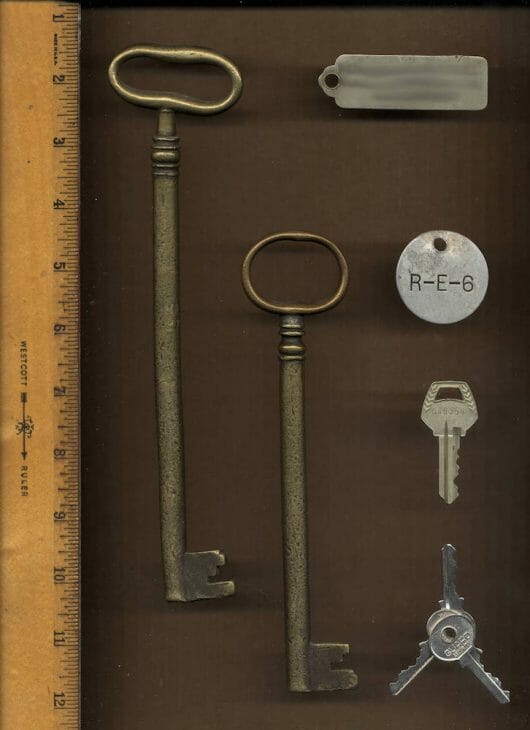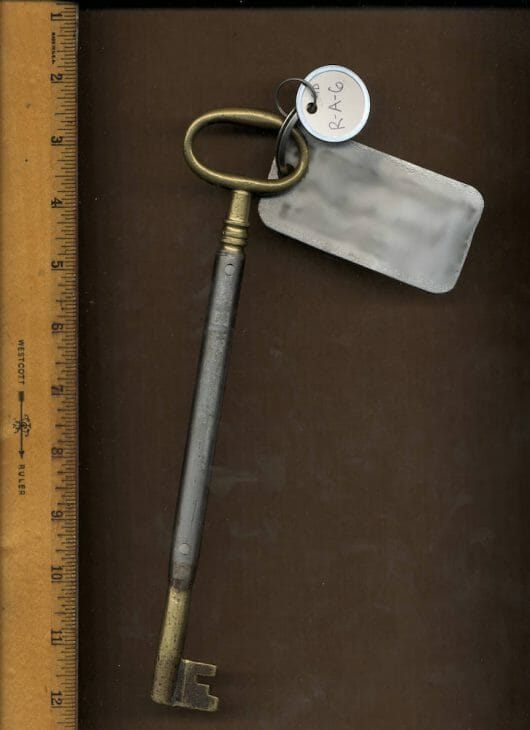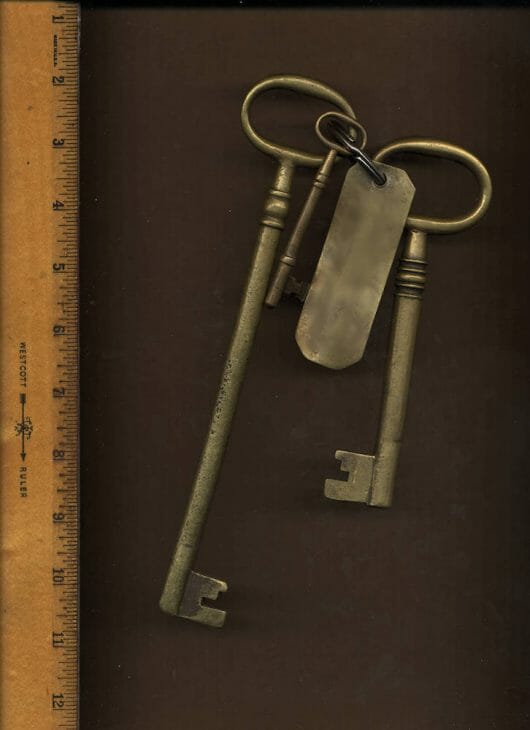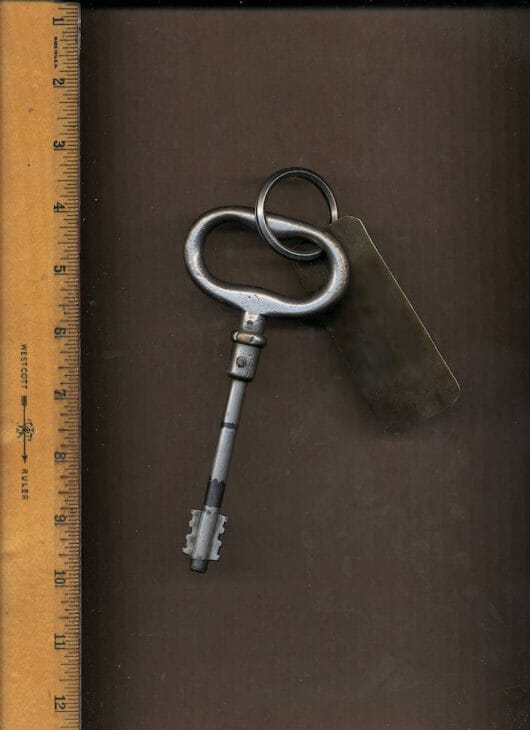There are over 840 family mausoleums across Green-Woods, in various architectural styles from Egyptian Revival to Gothic Revival, some dating as far back as the 1850s. Use this slideshow to see some of the beautiful keys to these monumental structures. Images were captured by Green-Wood volunteer Troy Kreiner (learn more below).
We have a broad range of projects volunteers can work on. Sometimes Green-Wood volunteers create their own project, based on their specific interest. Troy Kreiner was studying graphic design when he volunteered at Green-Wood. Here he describes his project:
My interest in [The] Green-Wood Cemetery began on a class trip while attending the Cooper Union. Green-Wood historian Jeff Richman showed us the skeleton key collection, which mesmerized me. I took it upon myself to volunteer the next year . . . scanning all the skeleton keys and creating a digital archive of all the keys. After carefully composing all the skeleton keys on the scanner bed, I wanted to further elaborate on my research into specific people who had mausoleums. Which lead the creation of my exhibition, “Do Good Green-Wood.”
The 2013 exhibition celebrated the 175th anniversary of The Green-Wood Cemetery at the 41 Cooper Gallery, showcasing a selection of philanthropists who are interred at Green-Wood—an effort to further the philosophical notion of altruism.
What does it mean to have a legacy? Providing access, as a philosophical objective, is the agent that binds the “Do Good Green-Wood” exhibition with Peter Cooper’s mission for the Cooper Union, as well as the philanthropists interred in The Green-Wood Cemetery’s mausoleums. Each individual is represented by an assortment of artifacts and artistic installations, depicting their life achievements as well as the monumentality of their space at Green-Wood. The exhibition functions as a showcase, providing a closer look into the history and physical representation of the following individuals:
Mary Foote Henderson (1842–1931) who donated land around Washington D.C. to be turned into a park and library, and was an early advocate for healthier eating as preventive healthcare; Henry Bergh (1813-1888), founder of the American Society for the Prevention of Cruelty to Animals; and Louise Havemeyer (1855–1929), a significant member of suffragist movement in NYC, as well as a major art collector and donor to the Metropolitan Museum of Art.
Troy has provided us with an elegant, and graphic, record of our full collection of mausoleum keys. Thanks, Troy, for volunteering!
